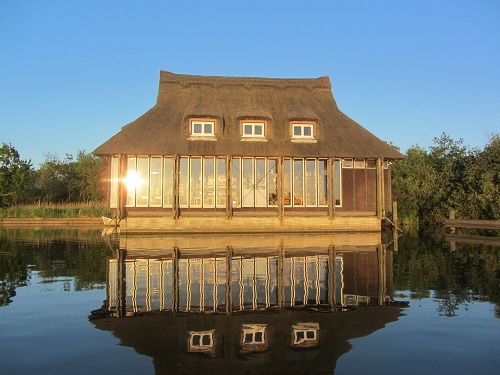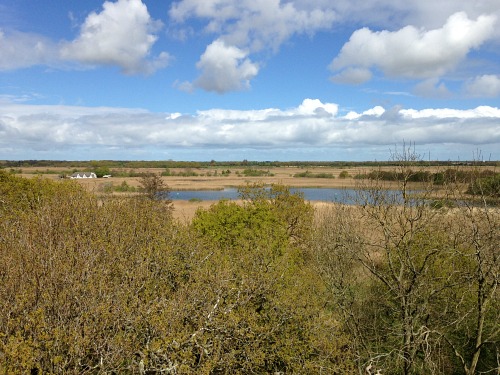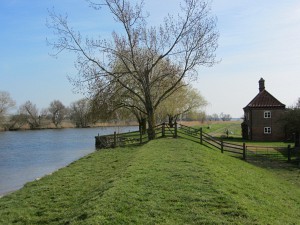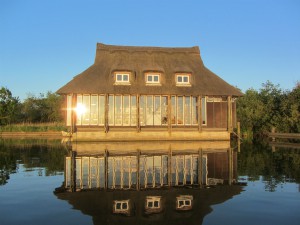- Explore Norfolk
- Norfolk Broads
- Mammal spotting
Mammal spotting in and around the Norfolk Broads
As the UK’s largest man-made waterway, it is no surprise that the Norfolk Broads are a fantastic environment for nature-lovers looking to spot birds and enjoy the flora and fauna emerging after the cold months of winter.

Being a waterway, the Broads are rich with rare birds, fish and other creatures. But the number of unusual environments in close proximity means this area is also an ideal habitat for a wide range of mammals. So, grab your binoculars, hire a boat and get out on the water to explore miles of lock-free navigable rivers and lakes.

In the summer, the Broads are filled with nature lovers and tourists. But visit in the spring, and you can enjoy waterways blooming with the peace and tranquillity of the off season.
There are about 90 species of mammals in the UK and we are lucky enough to have a few of them here in Norfolk.
Mammal Spotting On The Broads
Chinese Water Deer

Originally from Asia, Chinese Water Deer were introduced to the UK in 1896 and 1929. A combination of releases and escapes have seen the number living in the wild increasing across the country since 1945.
Enjoying swampy habitats, the deer have made the wetlands of the Norfolk Broads their home. While they can be spotted all year round, if you are wanting to see fawns then be sure to visit in the late spring. Other types of deer that can be spotted in the area include Fallow and Muntjac.
Water Voles
Water voles are not a nocturnal creature and do not hibernate, meaning they can be spotted venturing out to feed during mild weather. In years past they were a much more common sight, but urbanisation has significantly reduced their numbers. Despite this, Norfolk remains a stronghold for the species.

If you find yourself close to slow moving streams and soft banks and want to go mammal spotting, walk slowly and quietly - there are likely to be water vole burrows near the water’s edge.
Otters
As a mammal that feeds on fish, the Broads are the ideal place to spot otters. Sprightly and playful, they are most commonly found in quiet areas of water, so avoid looking for them in peak times when the waterways are filled with boats.
For a period in the 1970's it seemed the otters had left Norfolk, but thanks to improved conservation in the area, they are back in significant numbers. Keep a close eye on the banks and in the water – they are very agile and can be hard to spot unless they want to be noticed.
Brown Hares

East Anglia is considered one of the flattest regions of the UK, meaning that looking out over the Norfolk farmlands you are likely to spot the long ears and large frame of hares darting across the fields.
Other parts of the country may have seen a decline in hare numbers, thanks to hunting and changes to how grassland is used, but Norfolk still retains a significant population of Brown Hares. Commonly found in the early evening on marshes and heaths around the region, lucky visitors may spot gatherings and possibly even witness boxing among the females.
Where to go mammal spotting on the Broads
Ranworth Broad

For bird watchers, the floating Broads Wildlife Centre at Ranworth Broad and its panoramic vista is a delight, but there is much to enjoy for mammal-lovers too. Among three hectares of grassland, the boardwalk leads visitors through reedbeds and woodland, which are popular habitats for most of the smaller mammals that call the Broads home.
Hickling Broad

Based on the largest of the Broads, Hickling Broad National Trust Reserve is located on the River Thurne and is the ideal place to visit for those travelling by boat. With a range of habitats including open water, marsh and reedbeds, there is plenty to explore in this vast location. Walking trails will take you through fields, reedbeds and dykes with observation points dotted along the routes.
Both Red Deer and Chinese Water Deer can be spotted in the woodlands nearby and otters are also common in the area.
Barton Broad
After Hickling, Barton is the second largest of the Broads and became part of the National Wildlife Trust in the 1940s. After many years of use for navigation, the Broads Authority set about an operation to clean the Broad in 1995, and the response has been remarkable.
Today, the surrounding fens are flourishing with otters, herons and other types of rare plants and creatures.
Martham Broad
Located near Great Yarmouth on the River Thurne, Martham Broad Nature Reserve is a Site of Special Scientific Interest (SSSI) made up of two shallow Broads with areas of reedbed, fen and swamp land. Most famous for summer butterflies and a significant number of rare birds, such as the bittern and marsh harrier, Martham Broad has also attracted an abundance of the Norfolk Broads’ mammal population due to its diverse landscape. Visitors to Martham can expect to see voles, deer and hares.
With over 120 miles to cover, there are plenty of places to see many of these mammals in the small villages that dot across the broads, with multiple walking and cycling routes to explore.
Horsey Seals
The Norfolk Broads are also just a short distance from some of the most famous mammals in the region - the seals!

Typically found between Horsey and Blakeney, Norfolk is home to both grey and common seal colonies, and their numbers are on the rise due to good habitat conditions and a lack of predators. Record numbers have been counted in recent years, with over 2,700 pups counted at Blakeney Point and 2,034 at Horsey born by the end of December 2018. It is an impressive sight to see the seals and their pups resting on the beach, and they return to the beach again during March and April for moulting season.
As I hope you can now see, there is a lot to discover and enjoy on the Norfolk Broads.













